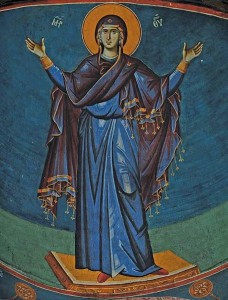I read some discussion on Facebook recently of a diagram showing the organization of the Church. I think the diagram was something like what’s shown in this post, but I’m not completely sure. Whatever the exact details of the diagram, what’s important about it is that the structure it showed included only men: First Presidency, Quorum of the Twelve, Seventies, stake presidents, bishops, etc. The striking thing was its exclusion of women.
I don’t fault the person who made the diagram or whoever shared it. It looked to me like it accurately captured how the Church is structured. If women are included anywhere, it’s at the margins, and perhaps informally, if any of the men in positions of authority ever discuss issues they’re facing with their wives.
I do think it’s interesting, though, that to be included in the hierarchy, men must be married. Bishops I think have to be married by rule. I’m not sure if it’s a rule for the other positions, but if it isn’t, it’s at least an extremely strong norm. The fact that each of these men is married but that their wives aren’t shown reminded me of diagrams of the structures of molecules that one of my kids was showing me recently. In at least some forms of these diagrams, most hydrogen atoms are not included explicitly. They are just assumed to be bonded at each atom where they would be required for the atom to have the right number of valence electrons.
Here’s an example, courtesy of the NIH’s PubChem website:

